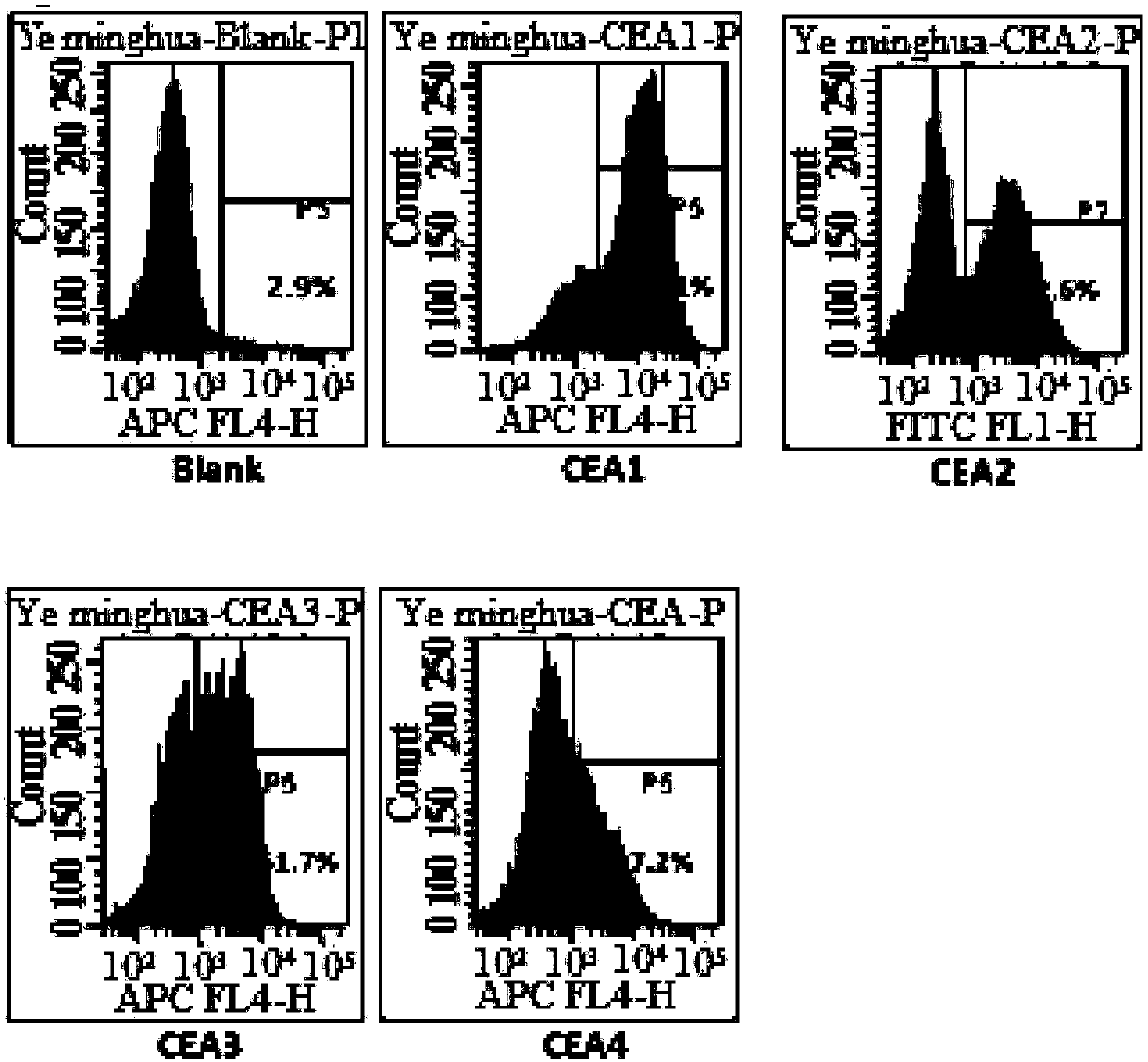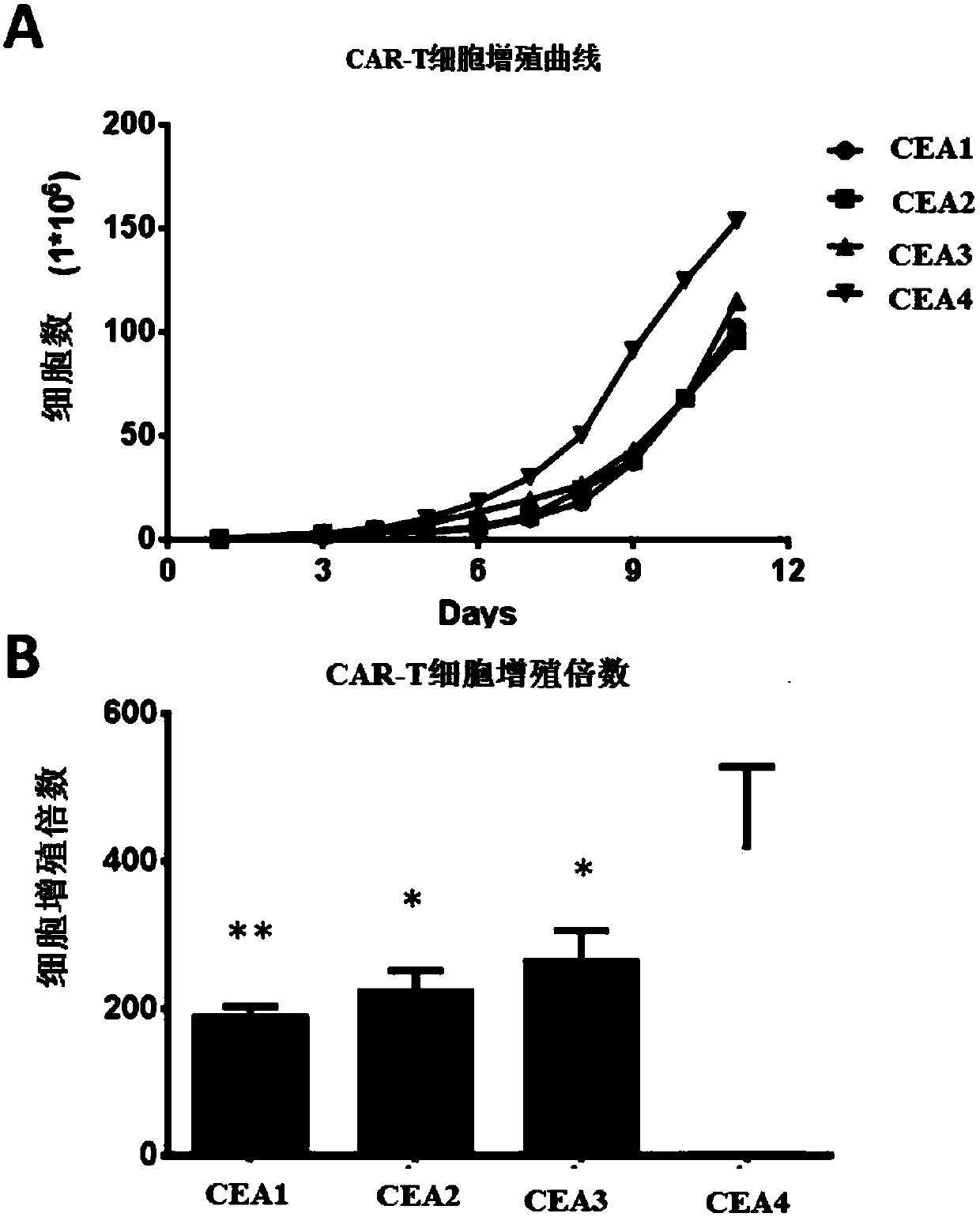Chimeric antigen receptor containing CD27 intracellular domain, lentiviral vector and application thereof
A chimeric antigen receptor, intracellular domain technology, applied in the field of genetic engineering, can solve the problem of no report showing the promoting effect of CD27 molecule
- Summary
- Abstract
- Description
- Claims
- Application Information
AI Technical Summary
Problems solved by technology
Method used
Image
Examples
Embodiment 1
[0040] Example 1. Construction of CAR virus containing four stimulating signals of CD28-CD137-CD27-CD3
[0041] In order to prove that the CAR-T cells containing the four stimulating signals of CD28-CD137-CD27-CD3 are compared with the previously reported three stimulating signals of CD28-CD137-CD3, the two stimulating signals of CD28-CD3 and the single CD3 stimulation Signaling CAR-T cells are more advantageous, so it is necessary to construct viral vectors containing different combinations of stimulating signals. In this example, the single-chain antibody targeting carcinoembryonic antigen (CEA) is used as a unified extracellular recognition antigen structure, and the following four chimeric antigen receptors need to be constructed respectively ( figure 1 ):
[0042] LP-CEA(scfv)-CD8a-TM-CD3(CEA1);
[0043] LP-CEA(scfv)-CD8a-TM-CD28-CD3(CEA2);
[0044] LP-CEA(scfv)-CD8a-TM-CD28-CD137-CD3(CEA3);
[0045] LP-CEA(scfv)-CD8a-TM-CD28-CD137-CD27-CD3(CEA4).
[0046] 1) Synthes...
Embodiment 2
[0066] Embodiment 2, virus infection T cell
[0067] 1) Isolation and activation of T cells and virus infection
[0068] (1) Isolation of human peripheral blood mononuclear cells
[0069] Collect about 60ml of peripheral blood with anticoagulant-added blood collection tubes, divide into 30ml of 50ml centrifuge tubes, add 7.5ml of hydroxyethyl starch to dilute; naturally settle at room temperature (18-25°C) for about 30min, collect the upper layer of plasma, and The collected upper plasma was centrifuged at 1400rpm / min for 15min; then the pellet was resuspended with normal saline, added to the lymphocyte separation medium at a volume ratio of 1:1, gradient centrifuged at 400g / min, and the speed of the centrifuge was set to 1 , centrifuged for 20min; after centrifugation, the centrifuge tube was divided from top to bottom: the first layer: plasma layer; the second layer: annular milky white lymphocyte layer; the third layer: transparent separation liquid layer; the fourth layer...
Embodiment 3
[0074] Example 3. Effect of Virus Infection of CAR-T Cells on Cell Proliferation
[0075] After each group of viruses infected T cells, T cells were cultured for 10 days with RPMI 1640 complete medium containing 10% fetal bovine serum and 500 IU / ml recombinant human IL-2, and counted every 2-3 days . Then observe the growth of T lymphocytes, the results are as follows: image 3shown. The results showed that after the cells were infected with CAR-expressing viruses, they could still form a typical proliferating clonal cluster. By counting the cells and drawing the cell proliferation curve, it can be seen that the cells infected with Lv-CEA(scfv)-CD8a-TM-CD28-CD137-CD27 -CD3(CEA4) virus T cell proliferation compared with Lv-CEA(scfv)-CD8a-TM-CD3(CEA1) virus, Lv-CEA(scfv)-CD8a-TM-CD28-CD3(CEA2) virus, Lv- CEA(scfv)-CD8a-TM-CD28-CD137-CD3(CEA3) virus and T cells not infected with virus are better.
PUM
| Property | Measurement | Unit |
|---|---|---|
| wavelength | aaaaa | aaaaa |
Abstract
Description
Claims
Application Information
 Login to View More
Login to View More - R&D
- Intellectual Property
- Life Sciences
- Materials
- Tech Scout
- Unparalleled Data Quality
- Higher Quality Content
- 60% Fewer Hallucinations
Browse by: Latest US Patents, China's latest patents, Technical Efficacy Thesaurus, Application Domain, Technology Topic, Popular Technical Reports.
© 2025 PatSnap. All rights reserved.Legal|Privacy policy|Modern Slavery Act Transparency Statement|Sitemap|About US| Contact US: help@patsnap.com



